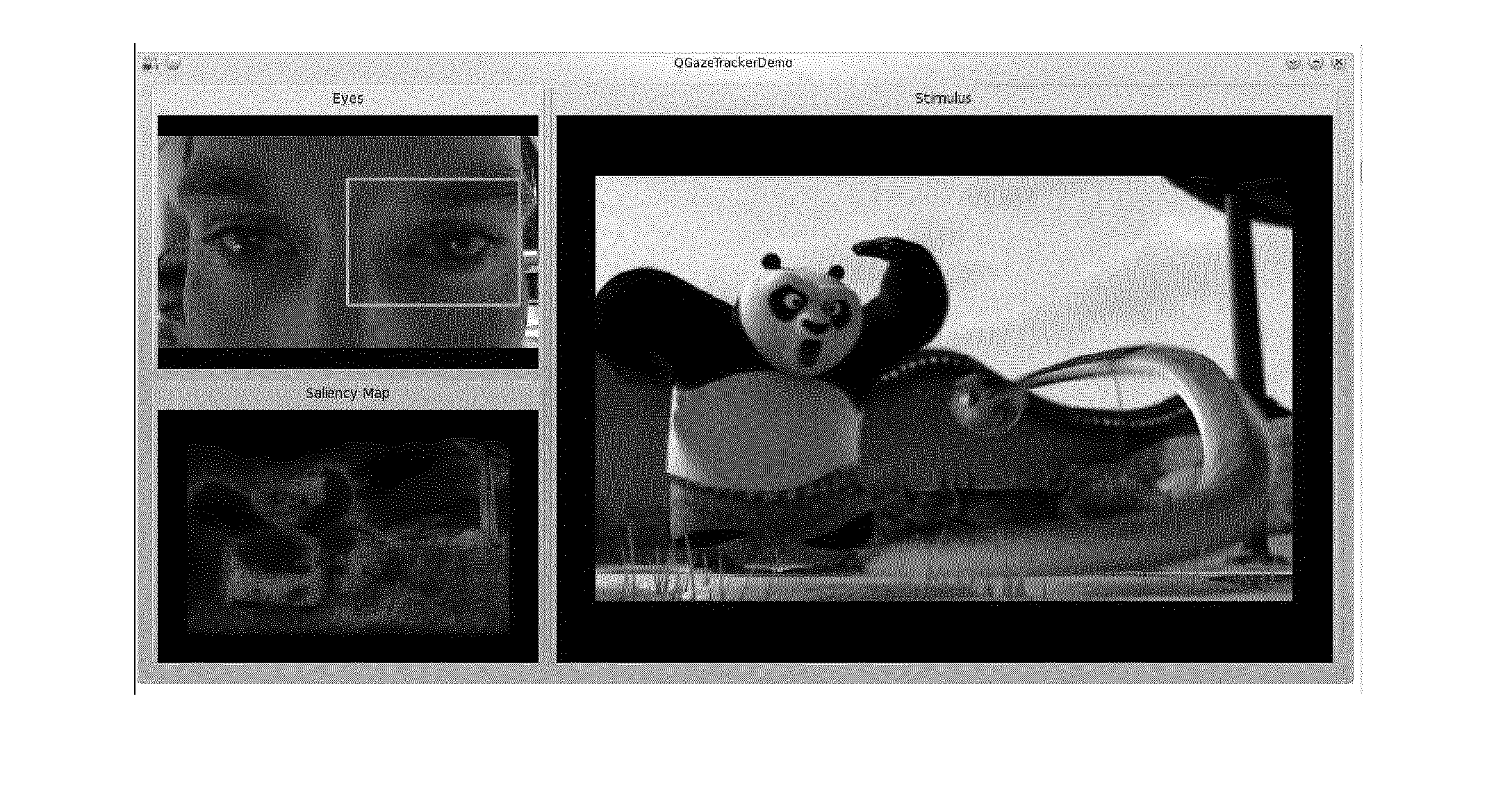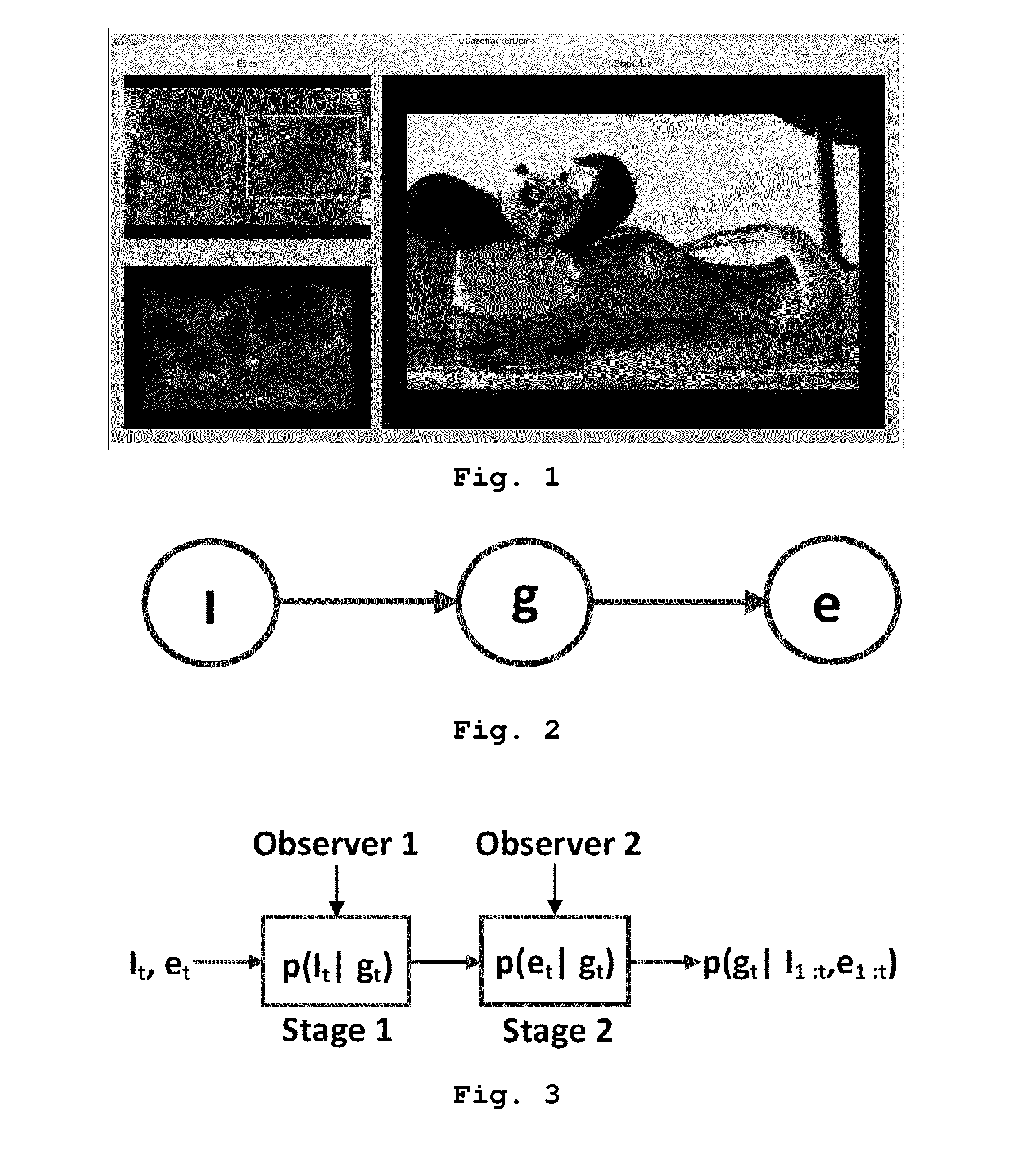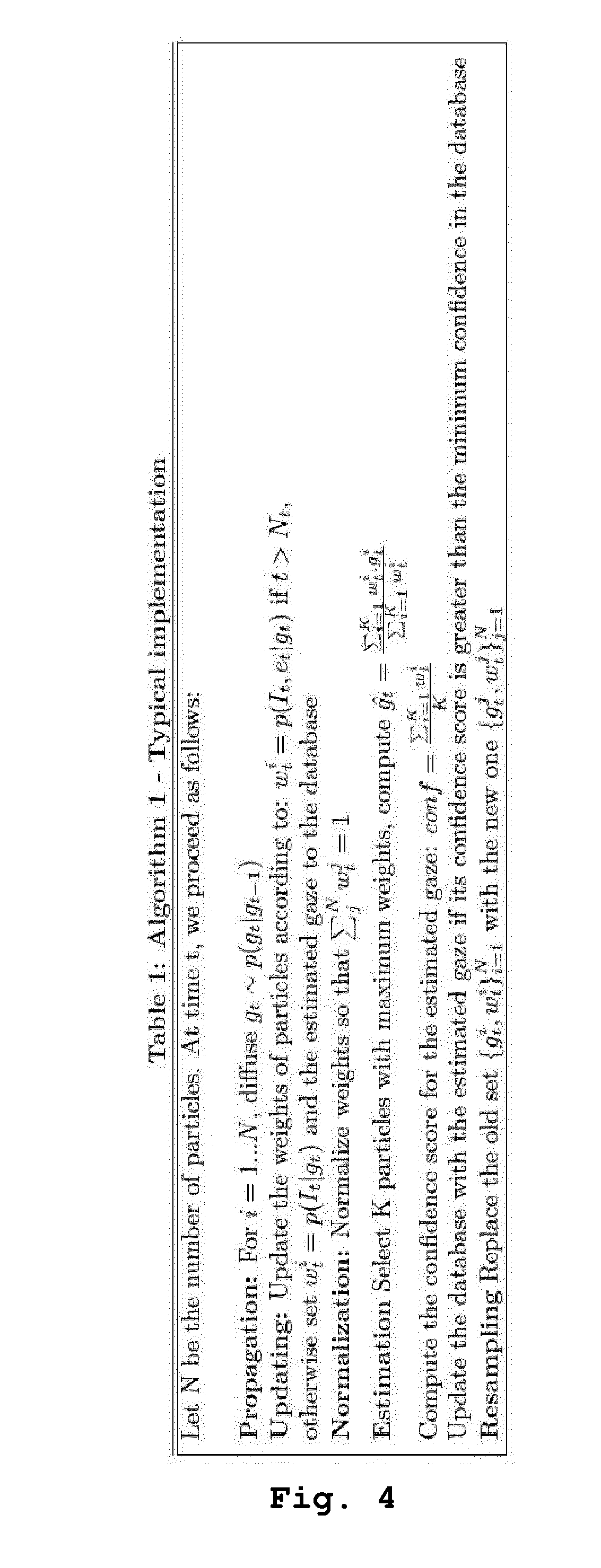Method for calibration free gaze tracking using low cost camera
a low-cost, camera-based technology, applied in image enhancement, image analysis, instruments, etc., can solve the problems of only suited to medical or cognitive studies, eog signal suffers from noise, and requires close contact with users, so as to address computation costs and maintain accuracy
- Summary
- Abstract
- Description
- Claims
- Application Information
AI Technical Summary
Benefits of technology
Problems solved by technology
Method used
Image
Examples
Embodiment Construction
[0024]FIG. 1 shows a user interface related to the eye gaze estimation method according to the invention. In the right window, an image from a sequence of images such as a video clip can be seen. In the upper left window, a picture of the face of a user which is acquired, e.g. by a low cost web camera, can be seen. The picture is acquired while the user is watching the image which is displayed in the right window. In the lower left window, a visual saliency map of the image displayed in the right window is shown. This saliency map is determined from the image. When a user watches a video clip, a sequence of images is available. For each image of this sequence of images, an eye picture shown in the upper left window is acquired and a visual saliency map shown in the lower left window is determined. Alternatively, only for every second image of the sequence of images, for every third image or the like or only for dedicated images of the sequence of images, eye pictures are acquired an...
PUM
 Login to View More
Login to View More Abstract
Description
Claims
Application Information
 Login to View More
Login to View More - R&D
- Intellectual Property
- Life Sciences
- Materials
- Tech Scout
- Unparalleled Data Quality
- Higher Quality Content
- 60% Fewer Hallucinations
Browse by: Latest US Patents, China's latest patents, Technical Efficacy Thesaurus, Application Domain, Technology Topic, Popular Technical Reports.
© 2025 PatSnap. All rights reserved.Legal|Privacy policy|Modern Slavery Act Transparency Statement|Sitemap|About US| Contact US: help@patsnap.com



